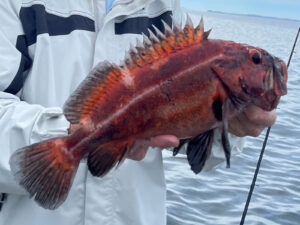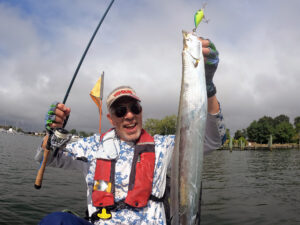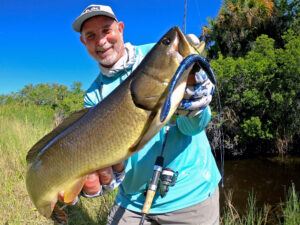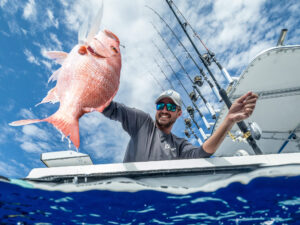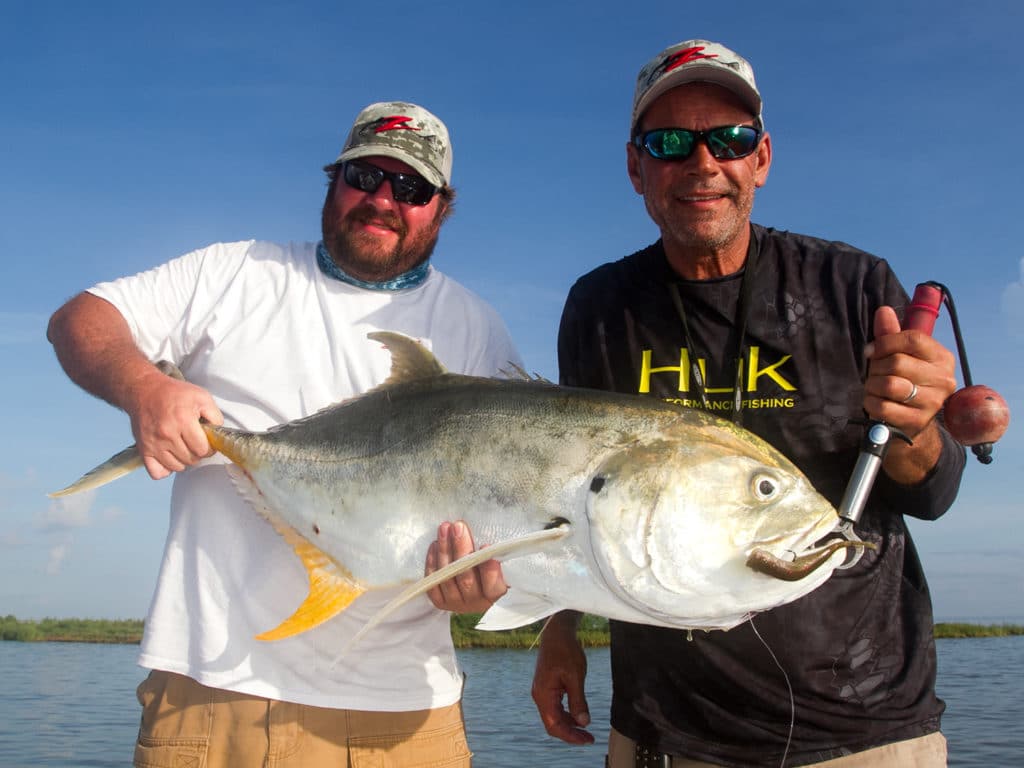
“I don’t get no respect!” said the jack crevalle. Maybe it was Rodney Dangerfield. The particulars don’t matter. The point is that jacks fight as hard as Rocky Balboa and grow larger than a mini fridge. That’s the ultimate gamefish, right? And yet some anglers still don’t respect them.
Maybe it’s because they don’t jump. Or they’re not food fish. But they’ll demolish your tackle in a heartbeat if you’re not prepared, leaving you tired and awestruck. Plus, they’re willing eaters, attacking live baits and lures with aggression. More recent nicknames like “Canal Tuna” and “Poor Man’s GT” feel a bit more appropriate for the blue-collar bruiser.
The GT name is particularly apt, as giant trevally (Caranx ignobilis) and jack crevalle (Caranx hippos) are both from the same genus, Caranx, which also includes other hard-fighting jacks and trevallies with distinctive rigid, forked tails.
“Jack crevalle are essentially yellow trevallies,” says Capt. Mike Holliday, of Florida’s Treasure Coast. “They don’t get as big as the GTs, but we sure catch a lot of 30- to 40-pound fish on a regular basis. Fly fishermen and anglers looking for big explosive bites and hard fights are all over them.”
Where to Find Jacks
Jack crevalle are nearshore kings of the western Atlantic, found from Nova Scotia to Uruguay if the waters are warm enough. The Gulf of Mexico is full of them. Most anglers consider them a southern species, with high populations in states such as Florida, Louisiana and South Carolina. On the eastern side of the Atlantic, jack crevalle roam from Portugal to Angola. The largest jack crevalle ever submitted to the IGFA weighed 66 pounds, 2 ounces, caught in Barra Do Dande, Angola.
Coastal Canals and Rivers
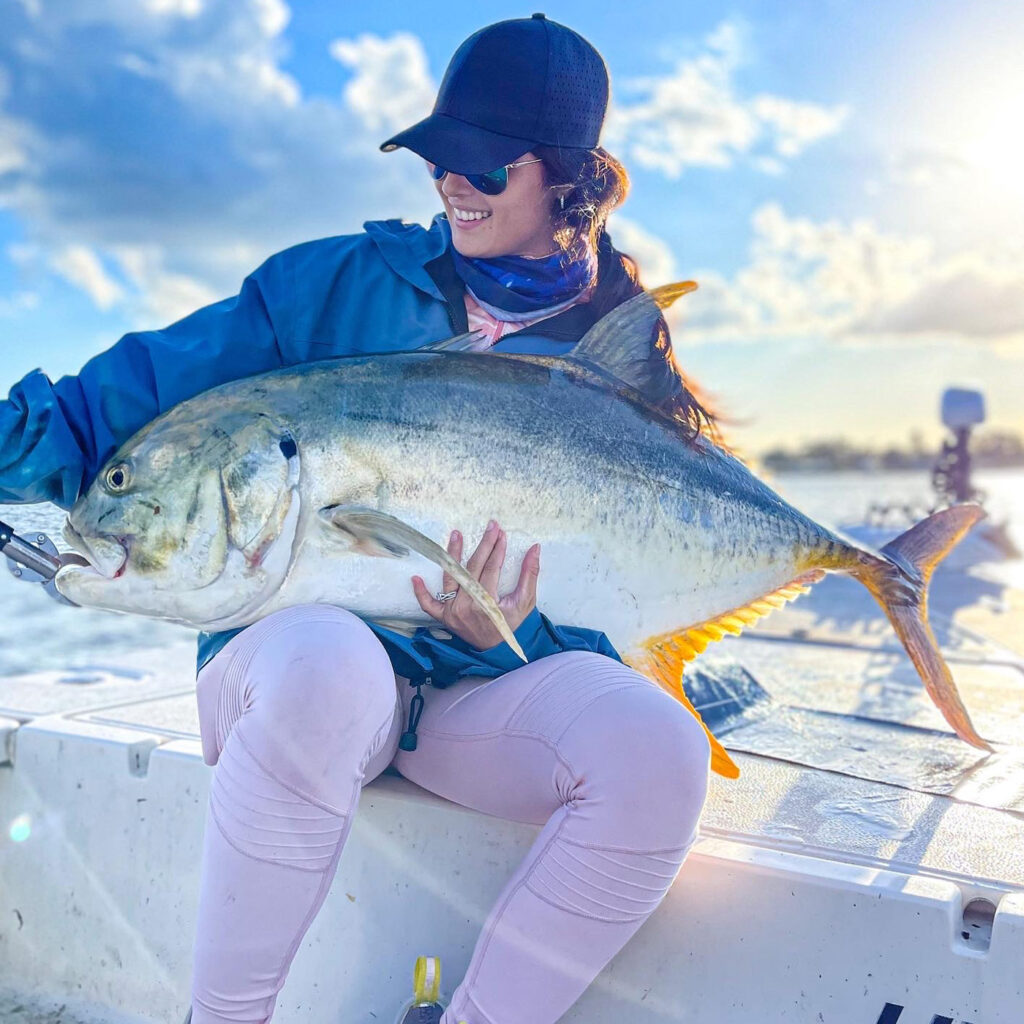
Coastal development hasn’t stopped jacks from prowling inshore waters. In fact, when other species dwindled because of habitat loss of oysters, grasses or mangroves, jacks persist. Some might say they thrive even. Fishing along concrete seawalls? Yeah, jacks will be there. Fishing out in the current of a channel? Yep, that’s a jack highway. Posting up near the bridges? Won’t be long until the jacks race through. Tucked away in a residential canal loaded with docks? That’s a jack factory.
“Jacks are visual feeders, so they are most active during the day,” says Florida-based angler Aaron Benzrihem. If you watch any of his videos on YouTube (@AbenzFishing), you’ll quickly recognize his love for big jacks.
“My favorite way to target the big ones is to look for surface feeds,” he says. “If you’re familiar with the chaos a 30-pound jack will make, it’s easy to spot and you can see it from a mile away. I keep extremely large tuna plugs rigged, and when I see the feeds, I run-and-gun to them.”
Benzrihem specializes in this urban style of fishing, targeting manmade structure, open waters near structure, and seawalls at the water’s edge. A big mullet tossed next to a seawall is a perfect bait for a giant jack.
“If I’m unable to find active feeds, I’ll use larger spooks — typically 8 to 12 inches is best,” says Benzrihem. “Live mullet is another excellent way. The bigger the mullet, the better.”
Nearshore Beach Fishing
Another prime location to find giant jack crevalle is outside the surf zone. You’ll likely need a boat with a tower or platform to have the most success. Many anglers run across schools of jumbo jacks while sight fishing for tarpon or cobia.
“The schools swim in big circles — which I believe is protective behavior — but the sight of 50 to 1,000 jumbo jacks swimming clockwise with their fins out of the water makes for an impressive and exciting fish to target,” says Holliday. “And if you lose a hooked fish, you just have to turn around and throw at the school again.”
The schools are different sizes too — some have 50 fish, some have 1,000. Holliday knows by the size of the school how big the fish will be.
“As a rule, the smaller schools have the larger fish, and the big schools have fish of all sizes from 15 to 40 pounds,” says Holliday. “The fish themselves are super aggressive, so anything you throw on top will draw explosive strikes.”
Holliday has built up specific fly clients who love to target big jacks off the beach. The fishing is addicting, up close and visual. Plus, the strength of a big jack will test your tackle, knots and stamina.
“These fish climb over each other’s backs to try to catch the lure or fly,” Holliday says. “And when you hook one, you know it’s going to be a while before you land it. Until you land it, you’re never really sure if you will get it in.”
Nearshore Gulf Rigs
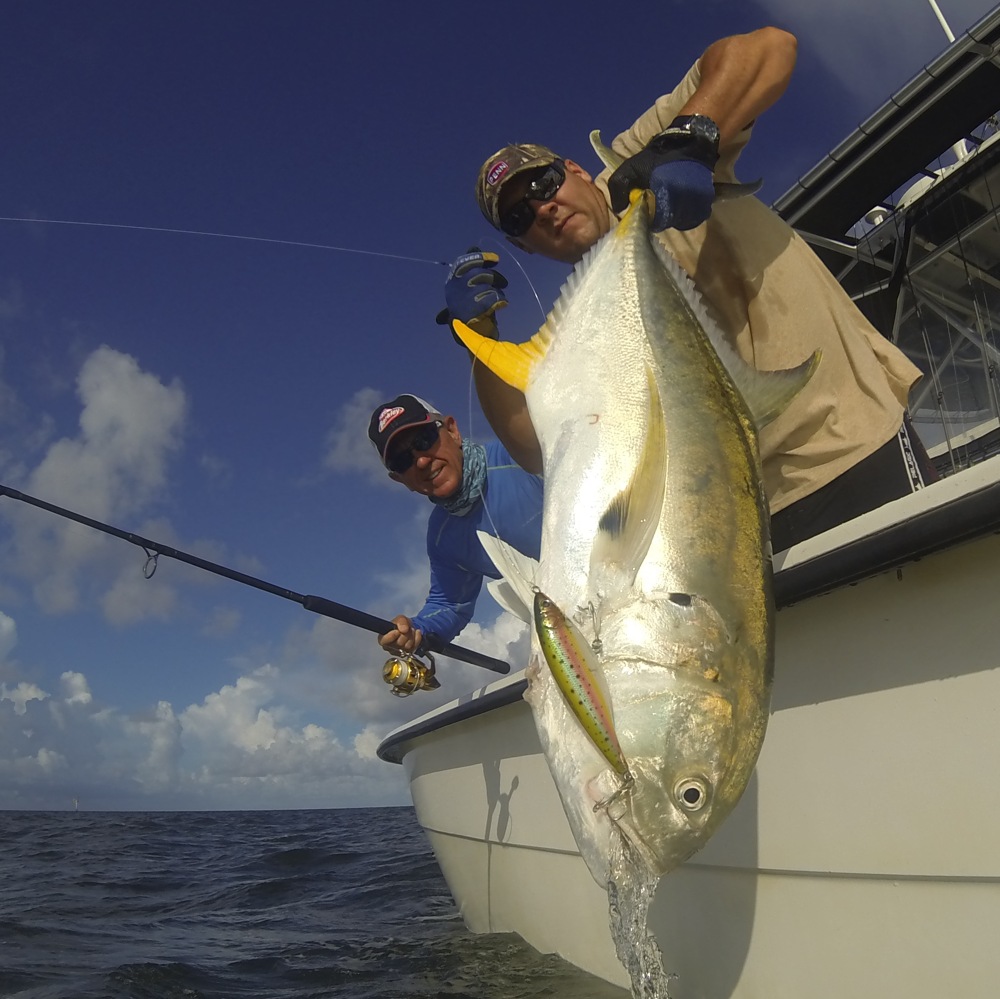
The biggest jack crevalle I’ve ever seen in-person was caught fishing next to a nearshore platform in the Gulf of Mexico. It was a scorching summer day, and Louisiana’s marsh waters were too hot. We dipped out on the backwater fishing and headed to the rigs in 10 to 25 feet of water. The water was much cooler and the speckled trout were hungry.
Using trout tackle, an angler on our bay boat hooked into a jack that fought forever. We didn’t know what it was at first, but eventually the long runs and pumps of the tail made it pretty evident. When that fish was finally landed and released, I’ve never seen an angler so happy to take a break from fishing. Fishing too light of tackle when targeting big jacks is a mistake most anglers make only once. Although, sometimes, you can’t help it, especially when targeting other species. Dropping down a live bait or soft-bait imitator is truly a gamble.
But if you’re at the nearshore rigs, have a “jack” rod ready. It might also be your cobia rod. There are so many fish that call these rigs home — snappers, redfish, tripletail, mackerel, black drum, trout, cobia, and others — that you really should have a mix of tackle rigged and ready to cast.
And when the waters cool just a bit, the outer islands scattered in the Gulf bays see an influx of big jacks. If you’re casting with popping corks for bull reds near the open Gulf, don’t be surprised if a jack crevalle takes you for a ride. They’re way better than the saltwater catfish that make up another common bycatch.
What Tackle to Use for Jacks
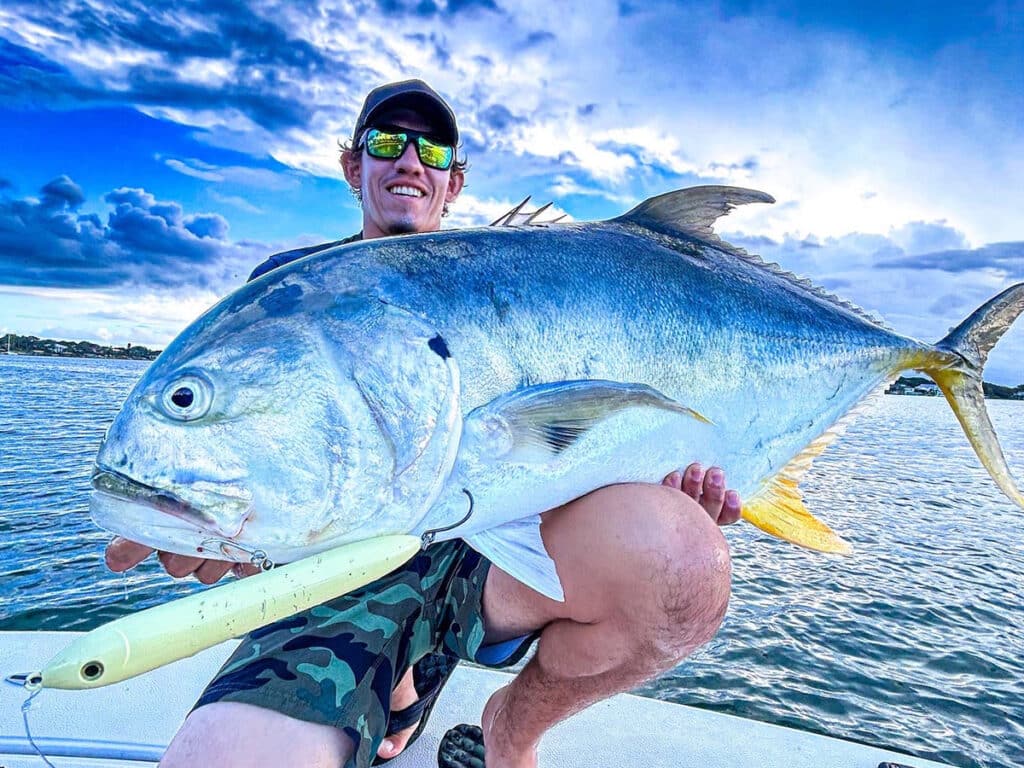
Benzrihem says his biggest tip is to not be under-gunned. Be prepared.
“You need heavy gear for fish over 20 pounds,” he says. “That’s the only way to stop them. If you’re fishing structure, you need to adjust even more. Gear is everything. I’ve had one too many giants break my reels’ drag systems.”
He uses 6000- to 8000-size reels with 40- to 60-pound braid and 60-pound leader. Holliday goes as light as 30-pound gear.
“Anything lighter, and it’s hard to move the fish once they turn on their sides,” says Holliday. “If you go lighter, you’re not doing the fish or the angler any favors. Topwater plugs are the way to go, but poppers are fun too. They need to have good hooks that won’t straighten out when you put the heat on a fish.”
Holliday carries 8-, 10- and 12-weight fly tackle in his boat. If the fish are small, under 20 pounds, he throws an 8-weight at them. Anything else, and he picks up the larger rods.
“I’ll go with the 10-weights if throwing baitfish flies or Dragon Tails, but bump up to 12-weights to throw the big poppers,” says Holliday. “I’ll go up to the 12-weight if the school we’re fishing has a lot of jumbos in it, usually a small school of 50 or so fish.”
It’s time to give respect to the jack crevalle as a sportfish. Many anglers are coming around. Jack crevalle are so much more than shark bait — they fight harder than inshore favorites such as snook, redfish, striped bass or seatrout.
“I always joke that I’m single handedly on a mission to make jacks great, but I think social media has helped them develop respect,” says Benzrihem. “Not many people were familiar with just how big they got and just how explosive they are.”

